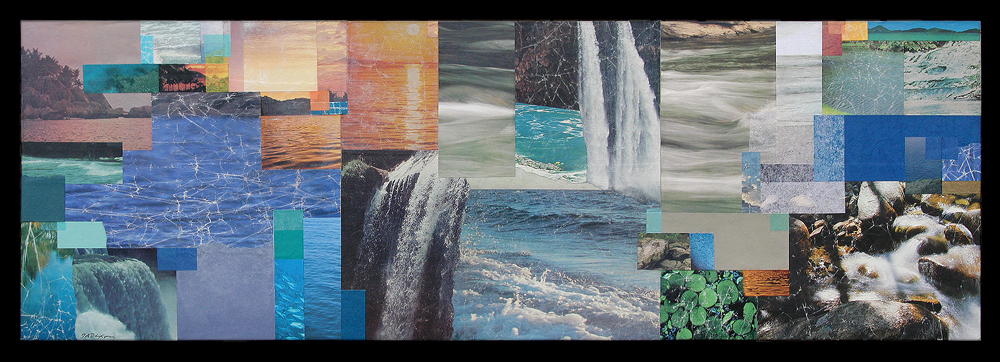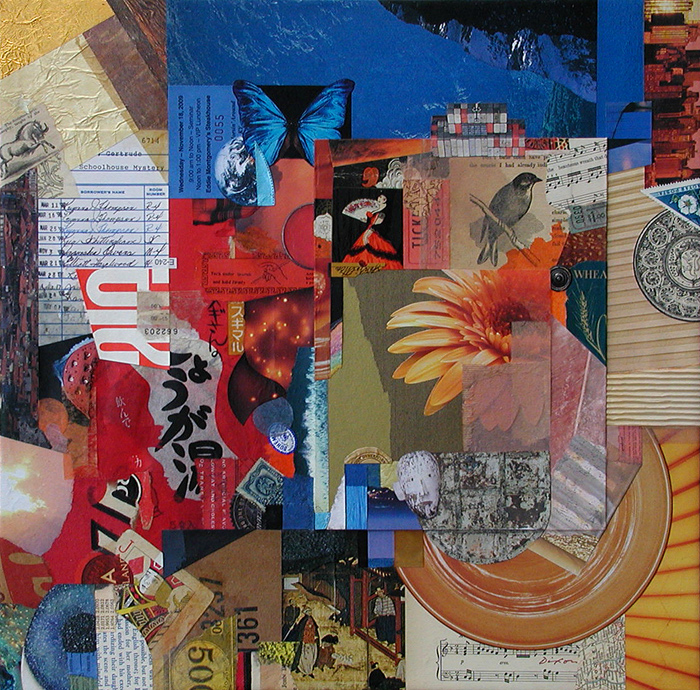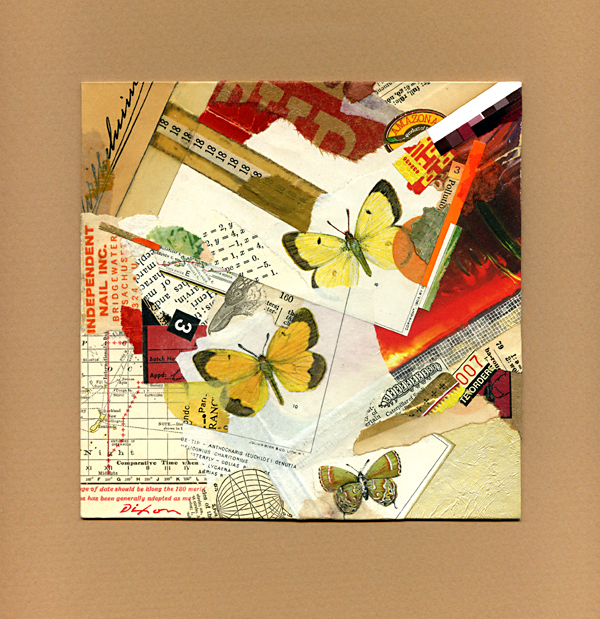“Put stardom and success aside and just go out and do it. It’s like painting. Don’t talk about it. Or, like writing. Put it down.”
— Jonathan Winters“Don’t think about making art, just get it done. Let everyone else decide if it’s good or bad, whether they love it or hate it. While they are deciding, make even more art.”
— Andy Warhol
After learning about a call for entries on the theme of “water,” at the new First Southern Community Arts Center in nearby Stanford, Kentucky, I leaped at the theme with a minimum of thought or calculation. I was overdue for the opportunity to create a larger piece, and it was good for me to push aside all the internal questions and mental gyrations which too often intrude on the genesis of a new work or new point of public contact. I mixed a batch of wheat paste, added a stabilizing measure of white glue plus acrylic medium, and dug into my stash of nature images. Hand manipulation of the surface with wet, rectilinear ingredients became an almost papier-mâché-like process that soon involved shapes of pure color. A sort of “low-tech pixelization” began to suggest the gentle clash of primeval and present — a Garden of Eden sweeping forward to the modern digital world.
When I delivered my artwork to the gallery and was assisted by a local artist and volunteer, Roni Gilpin, I could not have been treated better. Chasing my passion for collage, meeting pleasant people, and breaking into a new venue — I must remind myself from time to time that this is what it’s all about. I am excited about today’s artist reception, 4 to 7 pm (in downtown Stanford, adjacent to the superb Bluebird Cafe). Family is visiting from Davis, California, and everything is shaping up for an exceptional evening!
Many Waters Under Heaven
mixed-media collage
by J A Dixon
33 x 11.25 x 1.5 inches
Purchase this artwork!
Roni “Sister” Gilpin
volunteering at
First Southern Community
Arts Center











